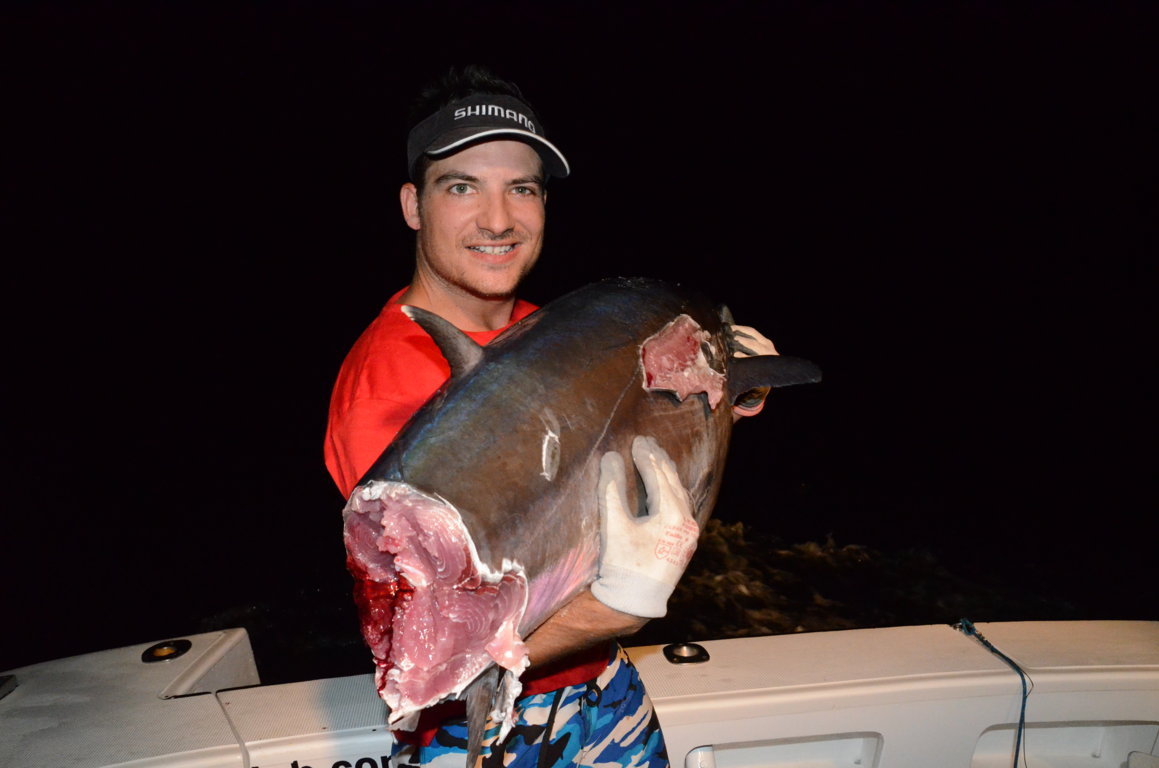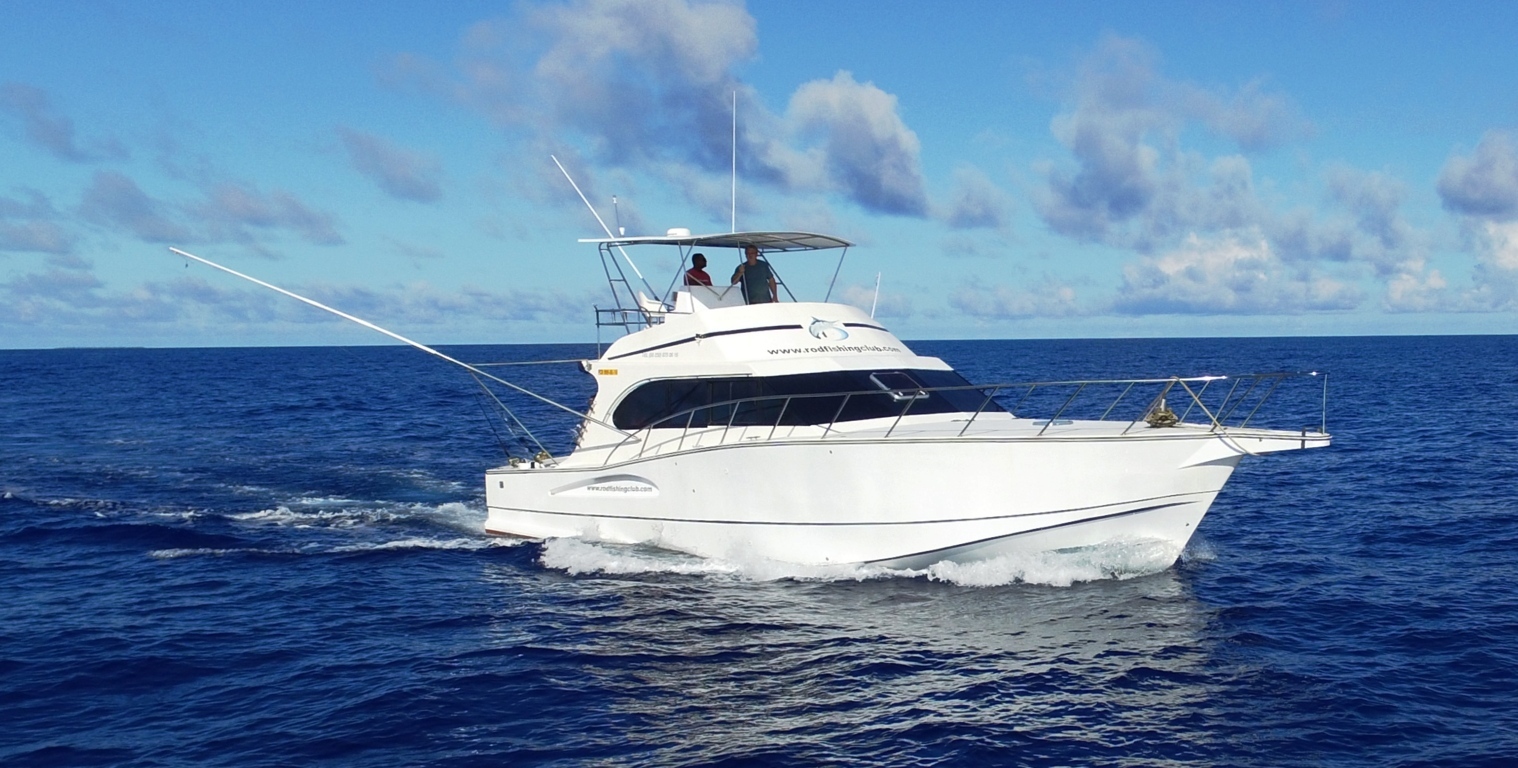
SHARKS
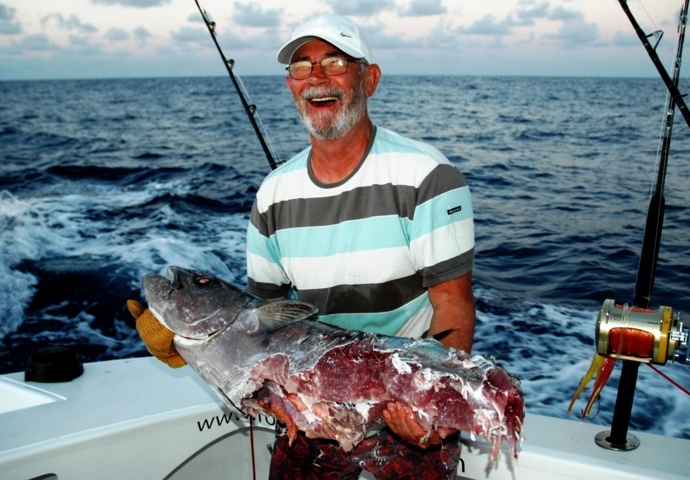
GENERALITIES ABOUT SHARKS
Sharks appeared at Devonian, more than 450 millions years ago (only 2 millions years for Man). More than 400 species are spread out over seas and oceans of the globe, from surface down 3500m deep.
Spined pygmy shark is less than 25cm long whereas whale shark can reach 18m long.
Its hydrodynamic body characterizes shark. Its skeleton is cartilaginous while fish are mainly boned.
- Shark can detect a blood drop within several cubic metres of water.
- Shark can perceive sounds more than 1 mile far.
- Shark does not seem to have a good sight; it may just distinguish contrasts and colours. Its attacks may be caused to mistakes.
- Shark has got an exceptional 6th sense: the ampullae of Lorenzini are situated at its nose. These cells can detect any variation of electric field, like a prey’s muscle contraction! So, if you happen to see a fin… keep calm! Do not move!
- Shark liver can represent up to 25 % of its weight.
Hundreds of teeth are split over different rows. The front ones are ready to attack, cut, slice or tear to pieces. If shark loses a tooth… no worries! A tooth of the following row will replace it. Some sharks then loose more than 30 000 tooth in their lifetime. We, humans, just can dream about that!
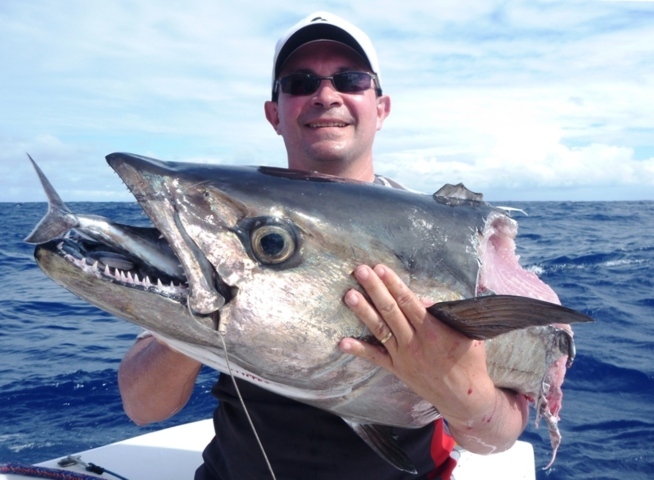
FISHING SHARK
We never really specially look for it, but we often find it at the end of the line: while jigging, baiting, bottom fishing, since it is present all over the island.
It can attack at surface as well as deep down. Shark will not leave any chance to a non-wired leader that it will quickly cut off. It is an amazing powerful fighter, never conceding defeated and that promises to remember, especially by the boat:
- Drifting, on dead bait on wire leader and circle hook
- Slow trolling – at surface or deep down – on dead or live bait on wire leader
- Drifting, baiting
- Jigging
Even if we have caught about 10 species in Rodrigues, here are the 4 ones the most famous:
- silvertip shark
- black-tail reef shark
- hammerhead shark
- bull shark
We systematically release them because we have been catch & release for a few years concerning different species and especially the most endangered ones.
Watch at the pictures below, you will notice sharks do not have our clemency.
SILVERTIP SHARK (carcharhinus albimarginatus)
- Silvertip shark is remarkable thanks to its white fins’ tips.
- Its massive sharpened body. Its large and long nose holds big round eyes.
- Its first dorsal fin is big and triangular.
- It’s coloured from dark grey with bronze dazzles on its back to white on its belly.
- Its upper jaw’s teeth is triangular and jagged whereas the lower jaw’s one is vertical and slender. This enables it to catch big preys, cut or tear to pieces chunks of flesh violently shaking them around.
- Silvertip shark can reach 3m long.
- Our club record is 170kg (in 2005).
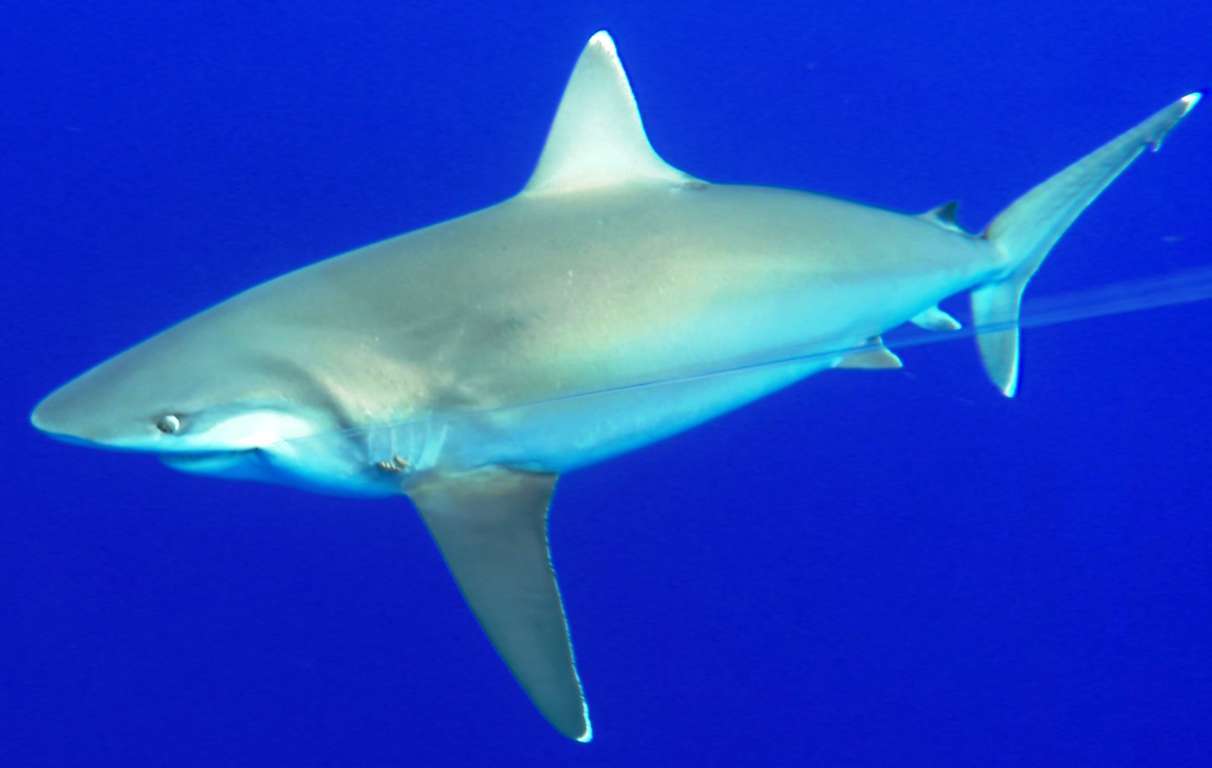
SILVERTIP SHARK BEHAVIOUR AND REPRODUCTION
- You will find silvertip shark in our area, close to high depths and to reefs. It moves from surface to 800m deep, lonely or within small groups, whereas young ones evolve in shallow waters.
- Silvertip shark reaches its sexual maturity when it is between 1,6 and 2m long.
- Male bites female to hold her while copulating, on top of dorsal fin. Females lay up to eleven baby sharks about 65cm long after 12 months pregnancy.
FEEDING OF SILVERTIP SHARK
- Silvertip shark’s diet mainly consists in boned fish like yellowfin tunas, escolars, flying fish or cartilaginous fish like small sharks or rays as well as cephalopods (octopus and calamari).
- Silvertip shark also feeds with carcasses. It contributes to well being of oceans by attacking sick or wicked animals.
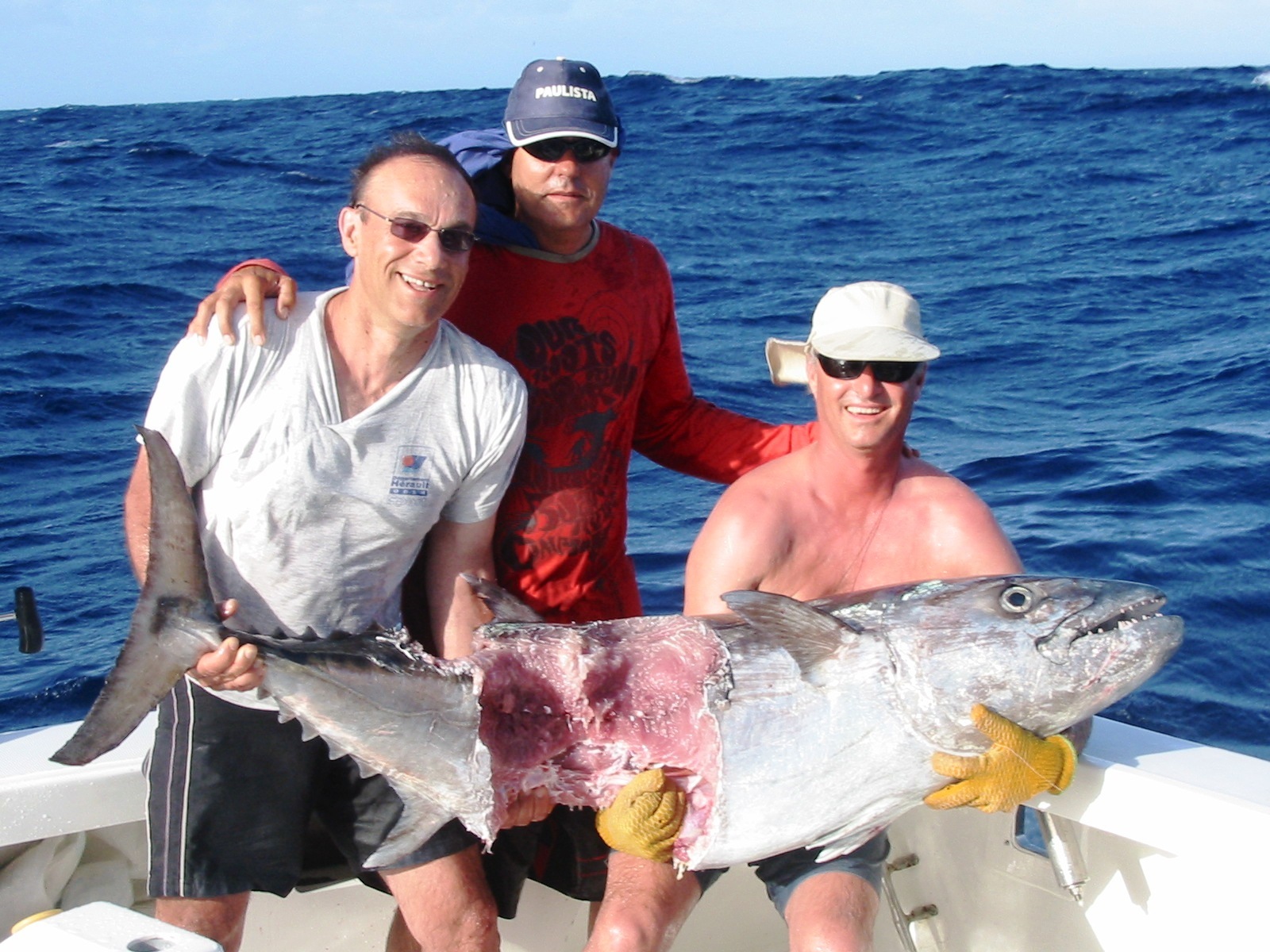
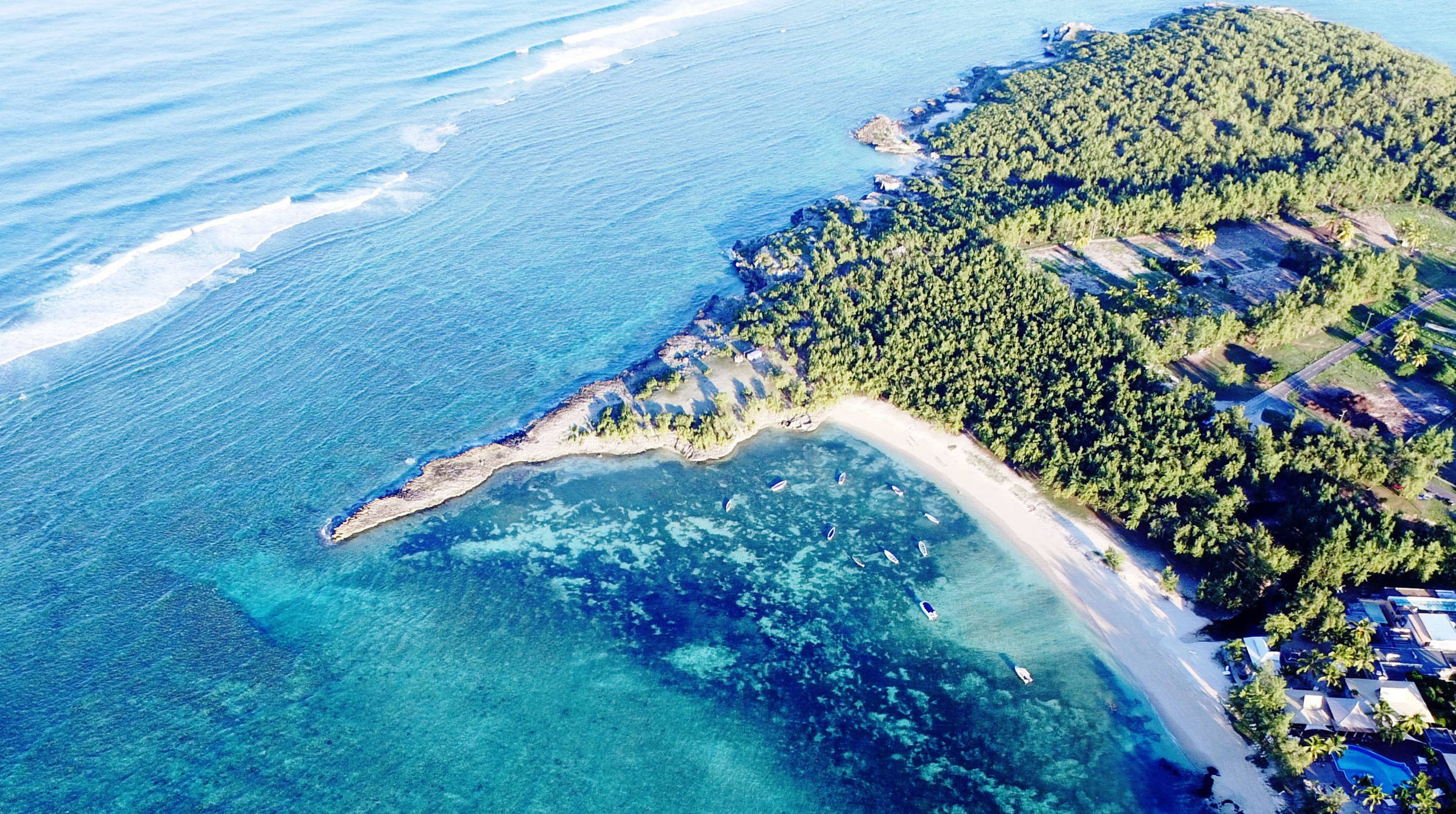
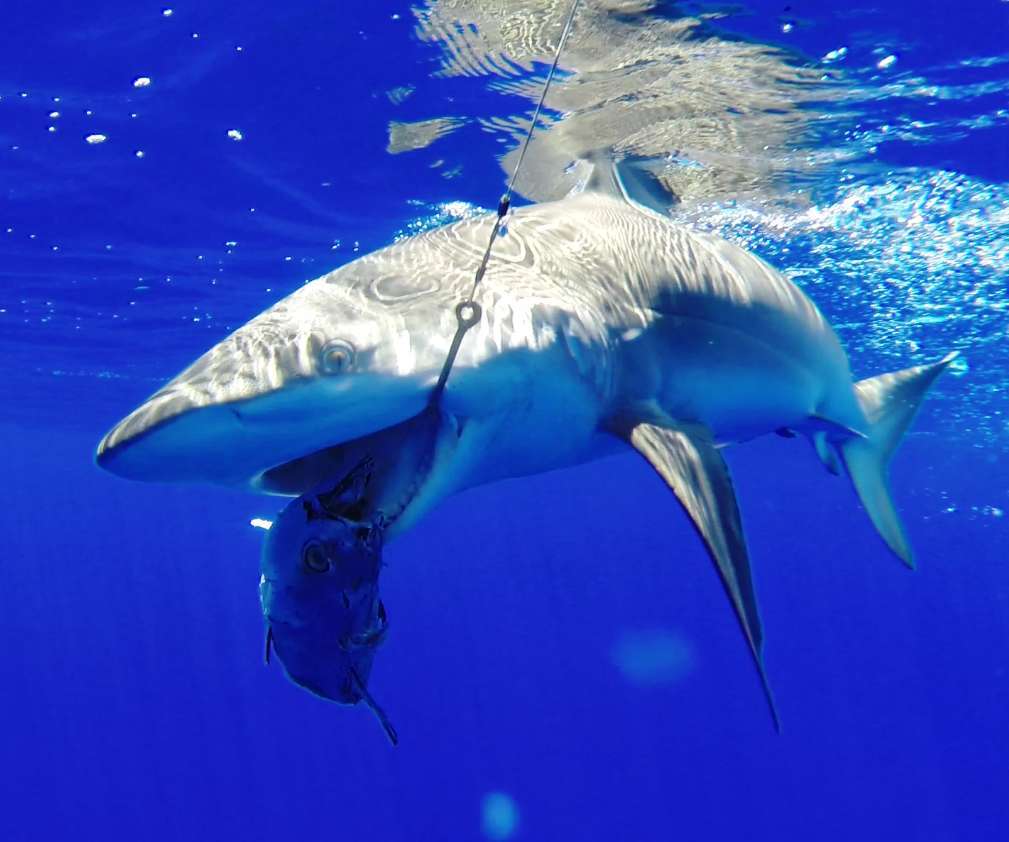
BLACKTAIL REEF SHARK (carcharhinus amblyrhynchos)
CARACTERISTICS OF BLACKTAIL REEF SHARK
- Its medium sized body is slim and massive at the same time, with a long and round nose.
- Its colour is grey and belly is white.
- Its pectoral fins’ lower part and tail fin border are blackish.
- Its upper jaw’s teeth are triangular and jagged whereas its lower ones are small and slender.
- Reaching a maximum 2,50 long for about 30kg, it can live until the age of 25.
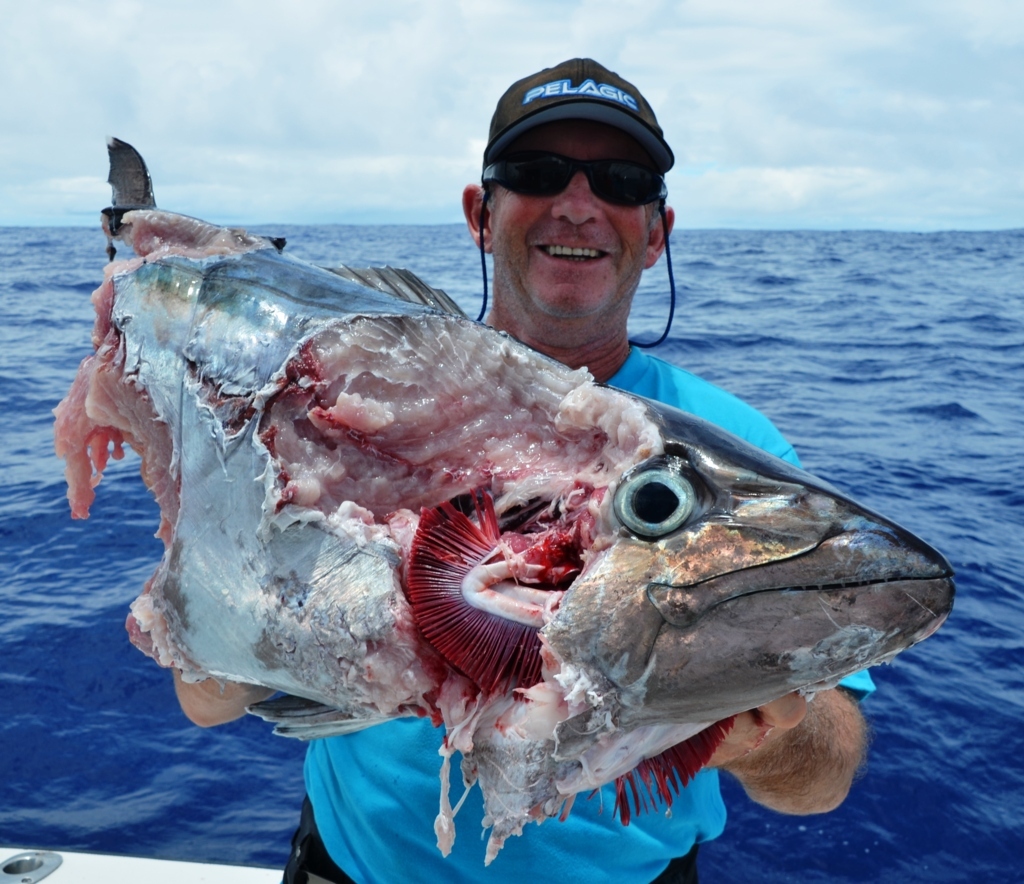
BLACKTAIL REEF SHARK BEHAVIOUR AND REPRODUCTION
Blacktail reef sharks mainly evolve into groups. They appreciate coral reef, drop off, down to 275m, banks outskirts (high reef) and deep waters.
It becomes mature around 7 years old, when individuals reach between 1,25m and 1.50m long.
Female lays 6 baby sharks (between 50 and 60cm) after one-year pregnancy.
FEEDING OF BLACKTAIL REEF SHARK
If they are active during the day, they are even more active at night where they spread to chase (yellowfin tunas, bonitos, etc...), shellfish and squids.
Food frenzy can make this shark become crazy. It then accomplishes bullying and contorted swim that generally precede attacks.
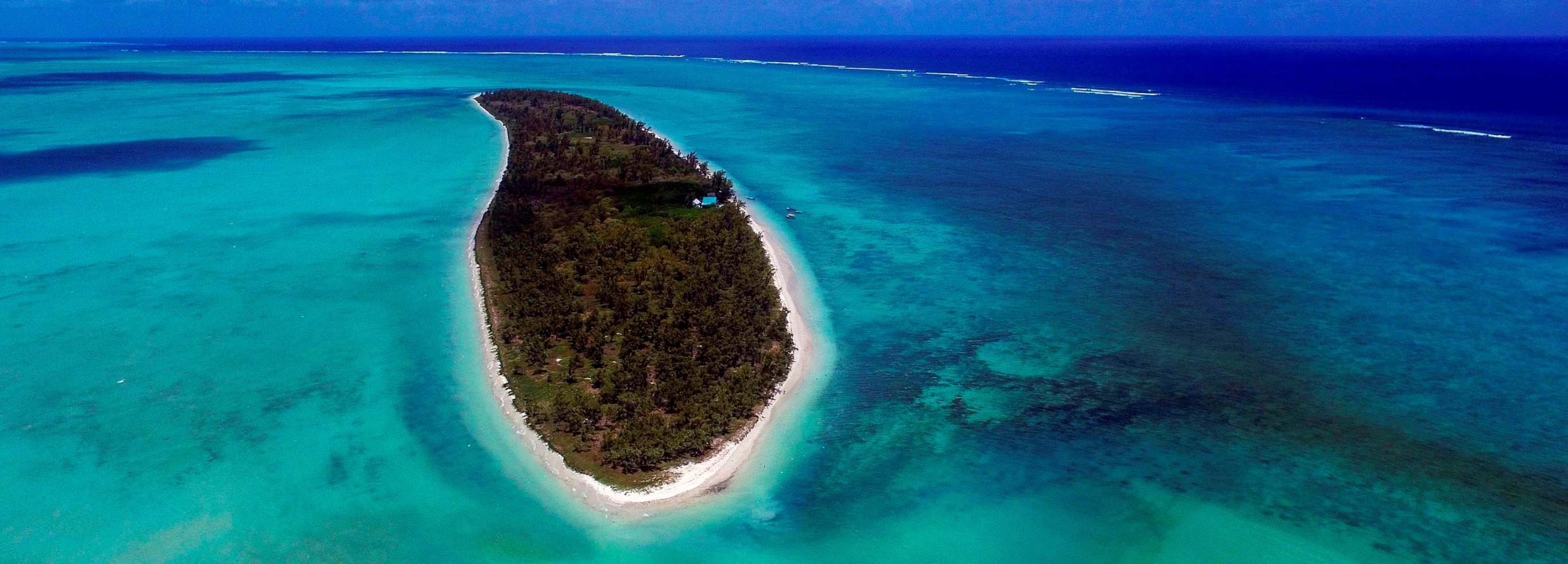
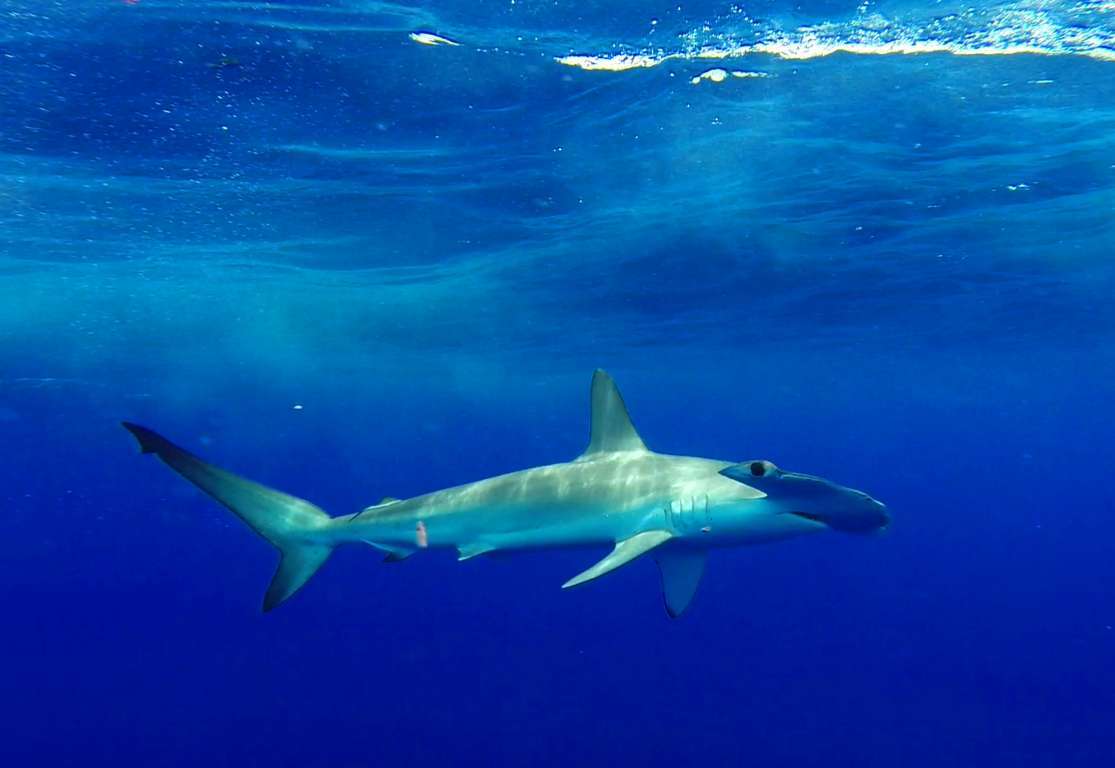
HAMMERHEAD SHARK (sphyrna lewini)
HAMMERHEAD SHARK CARACTERISTICS
Its peculiar head helps to identification: eyes are right in the middle of the lateral expansions of its flat head «festonné».
Its back is pale grey to brownish (sometimes greenish) and its belly is white.
Being from medium to big sized, hammerhead shark can reach 4,2m long and weight more than 150kg. The first triangular dorsal fin is important. The pectoral ends are black on boards, at least for the young.
Its teeth are triangular, with almost straight external sides, and a implantation oblique.
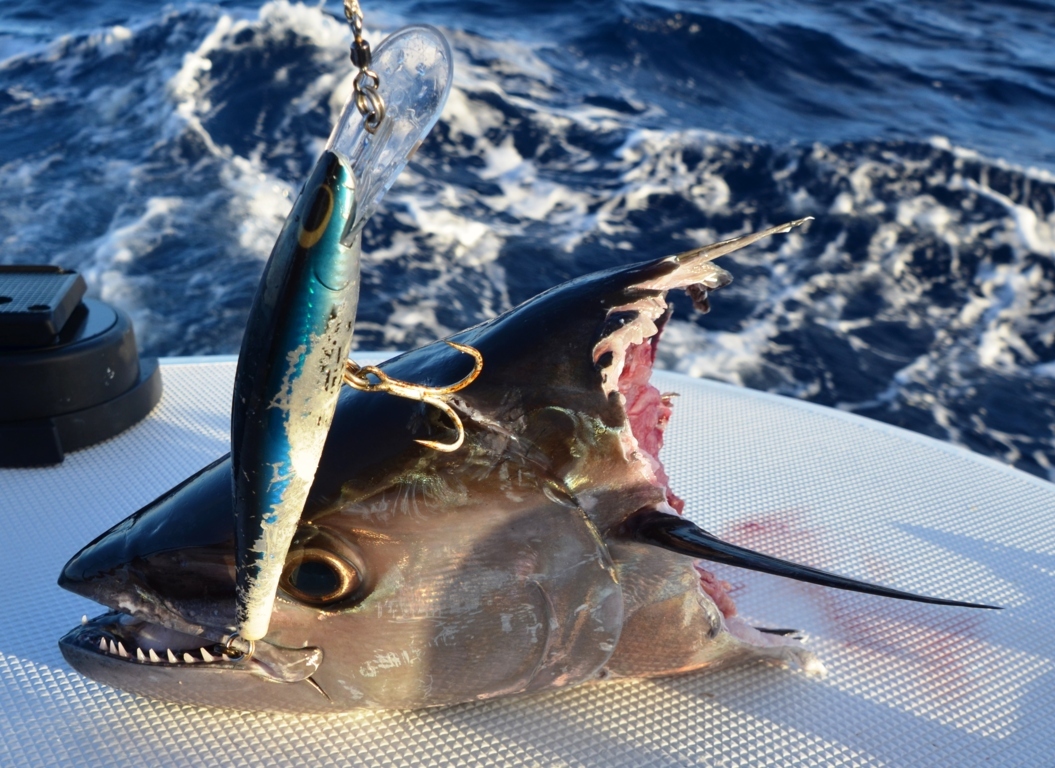
HAMMERHEAD SHARK BEHAVIOUR AND REPRODUCTION
Hammerhead shark is the most affluent in tropical and warm tempered seas all over the world. Pelagic and coastal, it evolves between surface and 300m depth.
Some are sedentary whereas others are migrator. They often move into schools, segregating according to age and sex.
160cm seems to be the length of sexual maturity for both sexes. This specie is viviparous. Pregnancy lasts between 9 and 10 months. Female lays in shallow waters about 15 or 20 baby sharks between 40 and 55cm long. Some were captured in Reunion, feeding and swimming lonely. They reached 55cm long for a weight of 1300gr.
FEEDING OF HAMMERHEAD SHARK
It feeds a lot with boned and cartilaginous fish as well as squids and octopus. It does not dislike shellfish (crabs and shrimps) especially the young sharks.

BULL SHARK (carcharhinus leucas)
BULL SHARK CARACTERISTICS
- Bull shark is called this way because it is massive and stocky. It has a big head and small eyes.
- Its back is dark grey or olive brown whereas its belly is white.
- Its dorsal fin is big and wide. The fins’ ends are blackish.
- Its fearsome jaw is composed with upper slicing sharp teeth, wide, triangular and notched, and vertical and sharpened lower.
- It can reach 4m long and 335kg.
BULL SHARK BEHAVIOUR AND REPRODUCTION
It is aggressive. It attacks without any exhortation. It is probably the most dangerous tropical sharks.
Generally lonely, bull shark moves along coasts of tropical seas down to 150m deep, that it keeps on exploring. It quite likes turbid waters.
Young ones reach their sexual maturity around 6 years old, while there are about 2m long.
Female can lay up to a dozen babies fully constituted between 55 and 80cm after 10 or 12month pregnancy.
Its life expectancy is about 20 years.
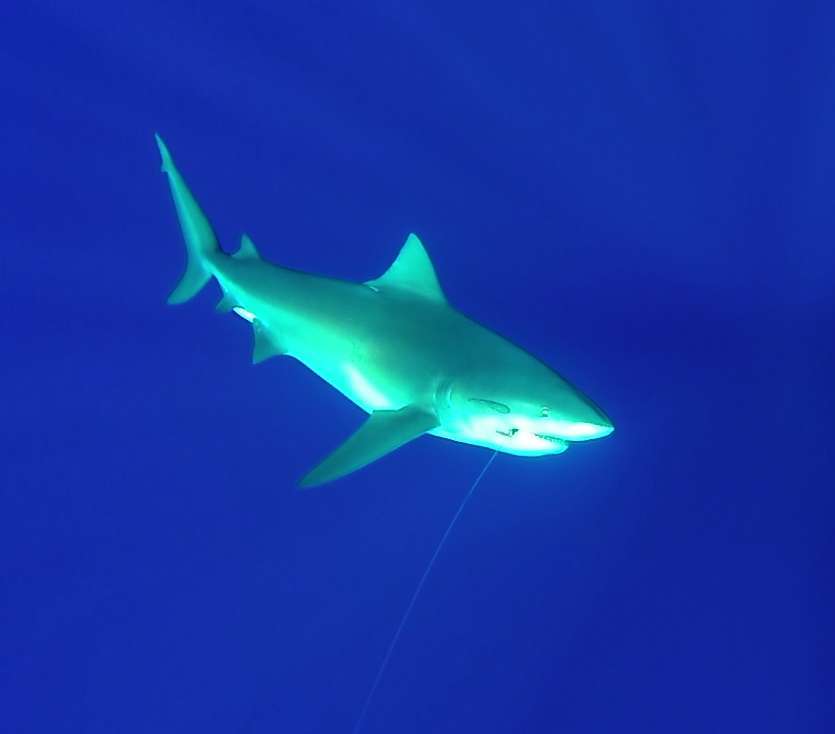
FEEDING OF BULL SHARK
Omnivorous, bull shark eats everything it finds: fish, turtles, birds, calamari, dead or live mammals but also its fellows!
Numerous anglers, young or older, feminine or masculine, want to catch shark for mystical reasons. Fighting it is always a great moment.
If you face a quite big shark, expect the fight to be tough!
Wilfried Henry fought a big bull shark for 6h and 15min, during 19 November 2009, at night, while he was jigging.
Would you break this record???
